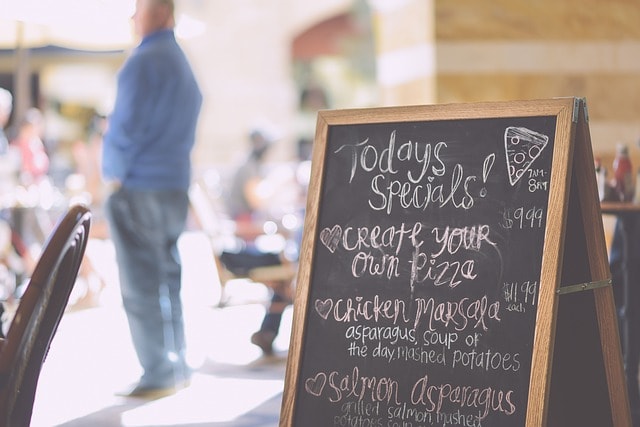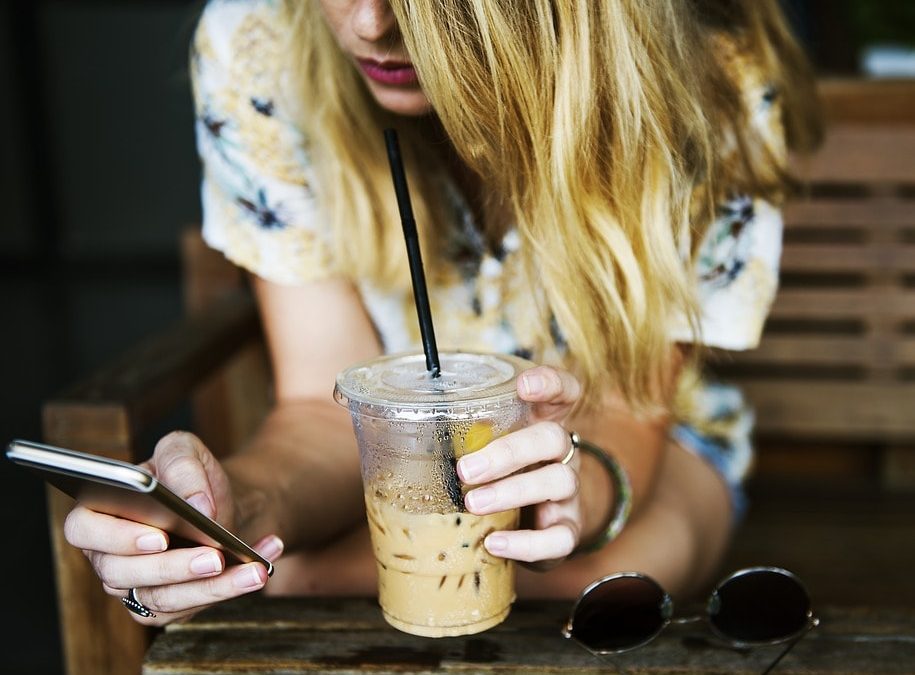
Many places, like restaurants, cafes, and theaters are moving away from traditional paper when it comes to their menus, specials, and advertisements. Instead they are using digital signage.
What exactly is digital signage?
Digital signage is a modern, flexible way to engage customers and patrons. Digital signage turns any screen into a digital canvas. You can create and manage content remotely and then play it on multiple screens in your business.
Before digital signage, if you had a special or event you wanted to push, you typically printed it out on a piece of paper and gave it to clients or pinned up in the bathroom. Customers were given little visual stimulation. Menus were either paper, laminated or put in pricy menu covers to make them last longer. They quickly became sticky and damaged, and offered little flexibility.
Today, digital signage allows business owners to take television screens and display content for their customers to see. Digital signage content can be easily created and updated.
How can digital signage help you?
Menu boards have become increasingly popular, as today’s consumers appreciate visuals. Text is often glanced over; carefully chosen adjectives barely registered in the minds the consumer. Pictures and videos capture and engage the consumer, making their mouth water. A digital menu board can be quickly updated to reflect changes in price and item availability.
Digital signage screens are also multipurpose, you can switch between an advertisements, social media feeds, and live TV. You can schedule content based on the time of day, switch between breakfast, lunch, and dinner easily. Content can also vary based on location, all controlled from your computer.
You can show videos of your latest commercial, stocks, Yelp reviews, and even create a chat with your customers. Digital signage increases communication and engagement. It helps reduce the costs of paper, menu covers, and stands. Many digital signage systems are user friendly and content can be easily created and updated from your phone or computer.

The restaurant industry can be extremely competitive today. On a local level, you are competing with many, potentially similar, restaurants within a few miles. The amount of restaurants even increases in big cities like Orlando. Marketing and a strong social media presence are extremely important, as many customers are turning to the internet first when deciding what to eat, but customer loyalty is the most cost effective way to increase profits.
According to the Harvard Business Review, “acquiring a new customer is anywhere from 5 to 25 times more expensive then retaining an existing one.” This study also stressed the importance of focusing on the right kind of customers.
Customer loyalty when done correctly uses customer data to create strategic rewards to motivate customers to return. Customer loyalty had its commercial start with paper punch cards, easily redeemable and easily forgotten or misplaced. This static form of loyalty didn’t utilize any customer data or offer any sort of customization.
Loyalty programs evolved with airlines having “frequent flier” benefits, and then loyalty cards widely trended in the 90’s. Everyone’s key chains and wallets were filled with various companies’ plastic cards with a barcode. Recently the biggest hitter in the loyalty field was Starbucks, who changed the game. Starbucks was a little Seattle-based coffee company, that rapidly grew, competing with Dunkin’ Donuts and local cafes.
Starbuck’s loyalty program took off when it shifted from being a simple loyalty card to a mobile friendly loyalty program in 2008. Their model was a simple “punch card” method of earning one “star” per visit, with twelve stars equally a free drink regardless of price. Someone ordering 25 dollars worth of drinks would get the same amount of stars as someone ordering a cup of coffee. A mobile app allowed the company to have access to more customer data such as age, gender, location, email, etc. for marketing purposes and analytics.
Starbucks was not rewarding based on spending habits, but rather visits. Should a customer who spends 60 dollars a week receive the same rewards as one that spends 5 dollars every other week? You want to keep and reward the “big spender” while increasing the frequency and spend of the 5-dollar customer. The company received a lot of backlash when shifting their loyalty program to reward based on spending habits. Loyal but low spending customers felt betrayed by the new program and lost their incentive and motivation.
Today’s successful loyalty programs are increasingly mobile based, adapted for both iOS and Android users. They are comprehensive, combining loyalty, marketing, and automation. Customers are automatically segmented based on their spending habits and visit frequency and are given customized rewards. Customers are reached via text message, push notification, and email to stimulate communication and peak interest.


